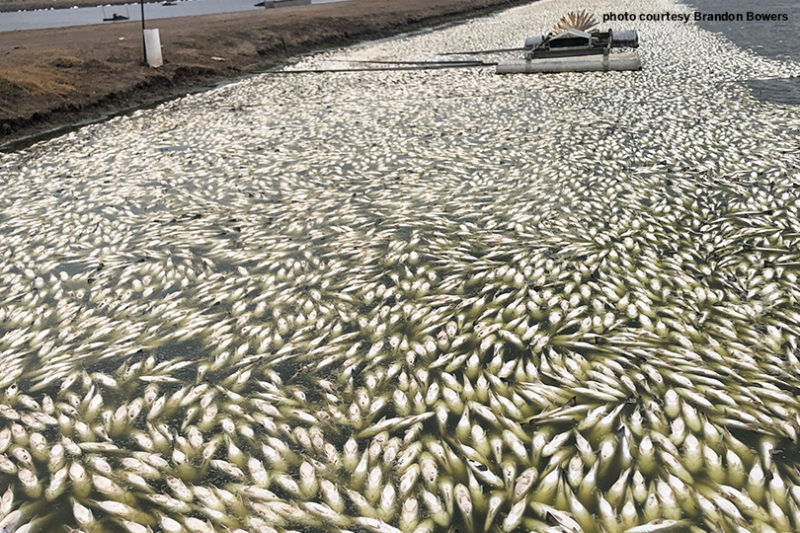In response to catastrophic aquaculture losses due to major winter storms that hit states along the U.S. Gulf Coast in February, the U.S. Department of Agriculture’s (USDA) Farm Service Agency (FSA) announced a policy change that makes food fish and other aquatic species eligible for the Emergency Assistance for Livestock, Honey Bees and Farm-raised Fish Program (ELAP).
Previously, only farm-raised game and bait fish were eligible for death loss ELAP benefits.
Beginning June 1, eligible aquaculture producers can request ELAP assistance for 2021 losses. This policy change is for the 2021 and subsequent program years.
ELAP provides financial assistance to eligible producers of livestock, honeybees and farm-raised fish for losses due to disease, certain adverse weather events or loss conditions, including blizzards and wildfires, as determined by the Secretary.
To be eligible, losses must have occurred on or after Jan. 1, 2021. For farm-raised fish and other aquatic species death losses only that occurred prior to June 1, 2021, FSA is waiving the requirement to file a notice of loss within 30 calendar days of when the loss is apparent. An aquaculture producer will still need to be able to provide contemporaneous records upon request to document the eligible loss event and demonstrate the beginning and ending inventory. The deadline to file an application for payment for the 2021 program year is Jan. 31, 2022.
“We want producers of all kinds to know that we’re listening. Today’s announcement demonstrates that USDA is committed to helping the aquaculture industry recover from losses due to Winter Storm Uri and other disaster events,” said FSA Administrator Zach Ducheneaux. “We are pleased to offer these policy flexibilities and related financial relief to impacted aquaculture producers; and we encourage them to contact their local FSA office for assistance.”
USDA also announced today that it will purchase up to $159.4 million in domestically produced seafood, fruits, legumes, and nuts for distribution to a variety of domestic food assistance programs, including charitable institutions, under the authority of Section 32 of the Agricultural Adjustment Act. The bulk of today’s purchase includes American seafood—the largest single purchase of American seafood in the Department’s history. Combined, these actions will address disruptions in the food production and supply chains resulting from the COVID-19 pandemic.
More Information
USDA offers a comprehensive portfolio of disaster assistance programs. On farmers.gov, the Disaster Assistance Discovery Tool, Disaster-at-a-Glance fact sheet, and Farm Loan Discovery Tool can help producers and landowners determine all program or loan options available for disaster recovery assistance. For assistance with a crop insurance claim, producers and landowners should contact their crop insurance agent. For FSA and NRCS programs, they should contact their local USDA Service Center.

